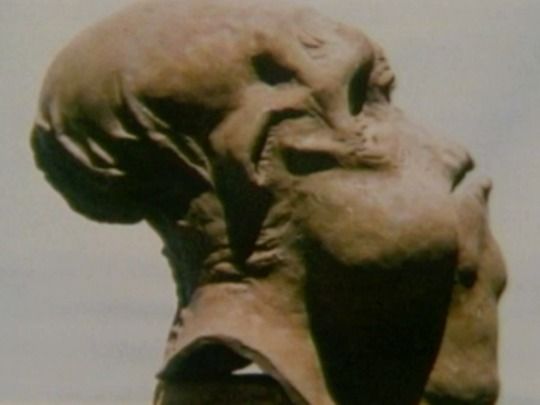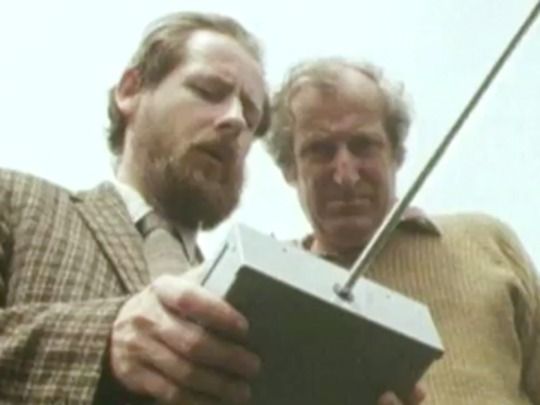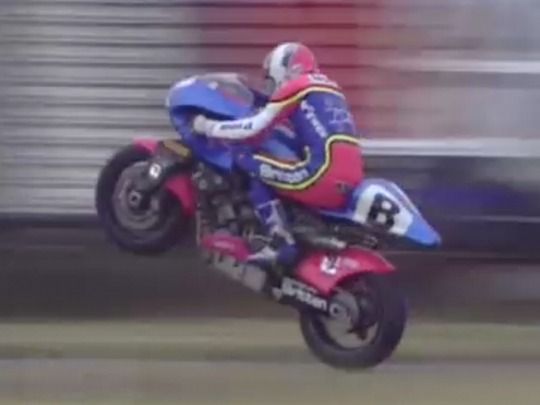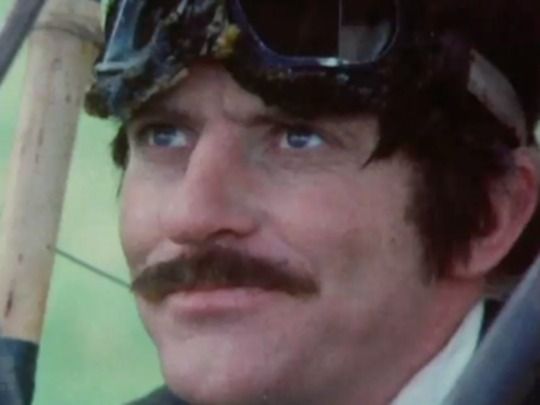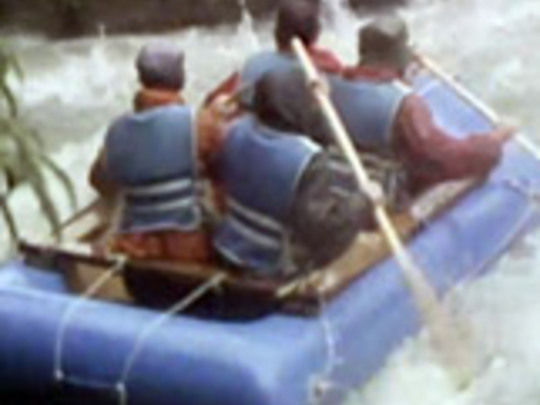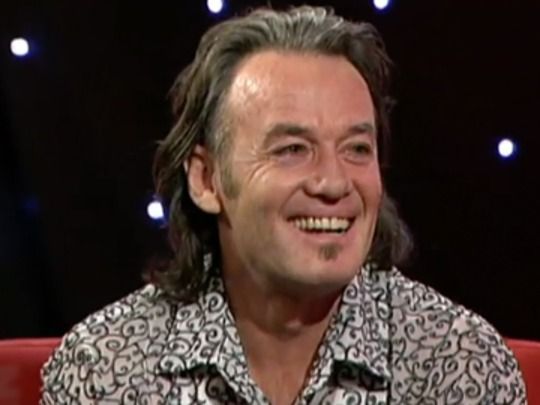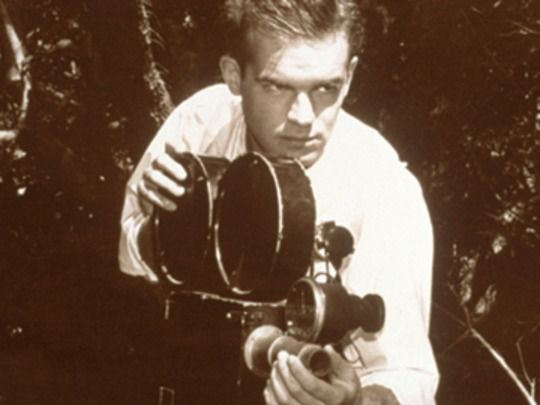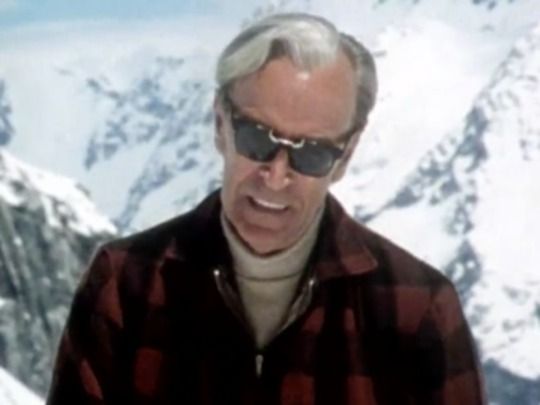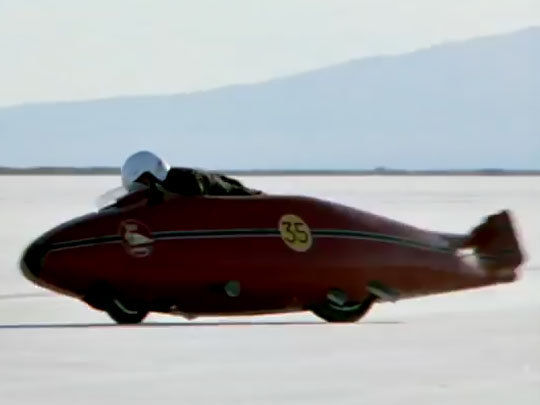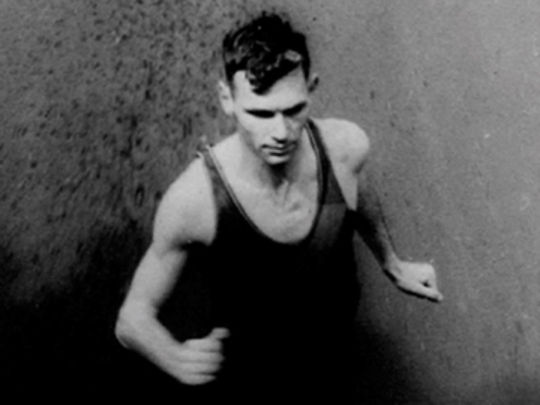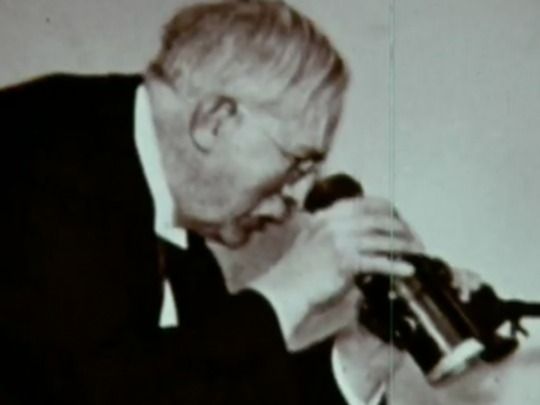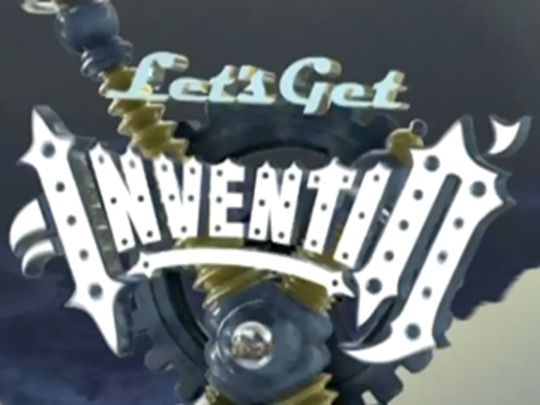Kiwi Ingenuity
Burton Silver on meerkats, flying Kiwis, and remote-controlled dogs
NZ On Screen's Ian Pryor chatted with inventor and Country Calendar 'Spoof' creator Burton Silver about the Kiwi Ingenuity Collection and Silver's general theory of creativity.
Burton Silver likes to imagine a meerkat on a trolley. The meerkat in question is travelling from one point to another, but keeps turning his head and noticing fascinating sideroads on the way. Silver's point is that on the journey to a good idea, many more good ideas lie in wait — so long as you are ready to discover them.
This NZ On Screen collection is a showcase of Kiwi discoverers who've opened their eyes and exploited the lateral perspectives that coming from the edge of the world imbues them with: from DIY superbike designers, to bungy-jumpers, to champion bull-shitters.
Silver reckons creativity is about making associations between things. As he points out, many scientific discoveries (eg. teflon and penicillin) have been born from an apparently accidental connection, or a moment of serendipity.
For Silver, being adaptable is another key trigger for innovation. Adaptability is central to the No 8 wire stereotype: the resourceful settler's knack of taking a piece of fencing wire and utilising it for other purposes has become synonymous with Kiwi ingenuity.
Being open to catalysts in one's environment — whether farm shed, laboratory, or native birds (in MacArthur fellow Allan Wilson's case) — has led to countless "Eureka!" moments in down under design. The inspiration for a vital part of Bill Hamilton's game-changing jetboat is reputed to have come from a high pressure fire hose.
In Good Taste Made Bad Taste, a young Peter Jackson provides firsthand evidence that adaptability was part of his winning formula from day one. In this 1988 documentary 'PJ' cooks up special effects in his Mum's Pukerua Bay oven and crafts ingenious equipment and effects, including a homespun Steadicam (a floating camera mount) made for $20.
Elsewhere the collection shows new ways to teach, shear sheep, think about sex, and jump off tall things, and celebrates innovators of all kinds: from athletes (Peter Snell - Athlete), architects (Architect Athfield), artists (Len Lye - Flip and Two Twisters), and atom-splitters (Rutherford of Nelson), to a fleet of flying Kiwis (Richard Pearse, Flight of Fancy, Jack Brown Genius).
As for Silver, his career amply proves the value of following good ideas off the beaten track.
His screen legacy is ensured by his role as a key creator of the legendary Country Calendar 'Spoofs' — unannounced Country Calendar episodes where audiences had the wool pulled over their eyes via apparently credible stories of No 8 Wire success. These included the inaugural slot on 'rural music' (featuring the fence-playing farmer and his pastoral orchestra); and a borax-poking episode that helped persuade outraged Kiwis that remote-controlled dogs were about to transform farming.
Silver, also appears in Flight of Fancy as a muse for a modern-day Richard Pearse (artist Michael Smither). Off screen Silver has been a cartoonist (with long-running hedgehog tale Bogor), created a new sport (Golfcross), and written more than 10 books, including international bestseller Why Cats Paint.
Why do cats paint? Just kidding ... where do you find ideas?
"Creativity is about making associations between things. You can force those associations by simply dropping things on the floor. So many inventions have come about by serendipity. I also think that a very big part of the creative method is being able to do u-turns. You can't sit down and say 'I'm trying to think of a good idea'. You have to be pursuing a good idea, but prepared to change when you find something else along the way. That's happened to me several times, and I'm very happy when it does. So long as I haven't invested too much money in something else!"
Lack of resources and specialist skills can also perversely encourage great ideas. Ernest Rutherford famously said of Kiwi smarts, "we don't have the money, so we have to think." You've talked about the value of New Zealanders being generalists — how that has been a positive in terms of inventing?
"If you were just locked into one area you can't bring all those other things in. Say you're looking at any archaeological find, and you're an amateur archaeologist, but you also know a bit about art, something about maths, something about motor mechanics ... then you'll bring all those things to the job."
"Say I need to dig down here a bit further, how can I do that? If a person has all these disparate interests, if they're sort of 'Catholic' in their tastes, that works in their favour. So you're a generalist, because you don't have the specialists, or you don't have the money to find the specialists: then you can make the breakthrough."
"The classic is Richard Pearse using irrigation pipes to make an engine. God knows what he used for spark plugs. He had to make it up, and in the course of doing that he came up with something quite original. Lots and lots of breakthroughs happen in that way, and my objection is that we don't teach that, we say 'how many exercise books have you filled' — not 'how many zany ideas have you got in them?'."
Zany thinking seems as good as a segue as any to the Country Calendar 'Spoofs'. How many of these did you work on?
"I did a thing on rural fashions, and the radio-controlled dog, and I did the one about the people who played music at the farm. When we did the remote controlled dog, the people that were really fooled were those horrified by a five-hour operation to fit electrodes onto a dog's brain, and the fact that the dog had to carry this device on its back.
There were also people with pekingese, who they thought they might be able to round up sheep. So we had letters of abuse, and letters wanting the machine. [TVNZ] got really worried about it. Bob Parker came on at the end and said 'well if anyone believes that they want to have their heads read'."
Forgotten Silver is another title that both celebrates Kiwi inventiveness, and playfully asks the audience to think about how much they can trust what they're being told ...
"Well it sucks the audience in by giving them two things of enormous significance.
a. we had a filmmaker in this country who was remarkable and ahead of his game, and:
b. Pearse was the first man to fly, and here's the proof, which we hadn't had before. So people were jumping up and down with glee."
Tell us your memories of helping Michael Smither to fly, for Flight of Fancy:
"It was very strange. I was meant to be Michael's muse. The fact of the matter was that nobody knew anything really about flying. The camera guy Ian Paul and the sound guy Ken Saville knew a hell of a lot more about aeronautics than me or Michael!"
"But Michael had this idea that you could go down to Puponga (near Farewell Spit) which had very high winds, and you could make a [glider pioneer Otto] Lilienthal-type flying suit, and kind of lift off with the wind. He said, 'look, all leaves are actually aerofoils, and when the wind blows across, they lift the branches up'. He would throw these theories off the top of his head. He's very exciting to be around, a lot of fun."
"Rachel McAlpine went away and made a skirt that spun around in the wind. She and I started talking about wind play, and we said 'the only thing people have ever done with the wind is to yacht in it, or fly kites, but no one's had things where they run into the wind and do somersaults and wind-assisted cartwheels. Let's do that, let's start playing with things'."
